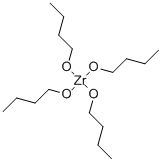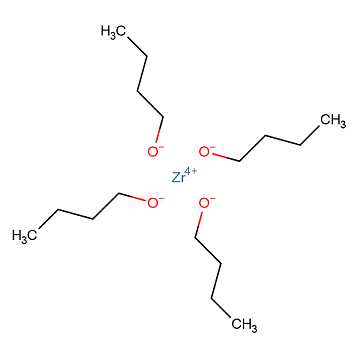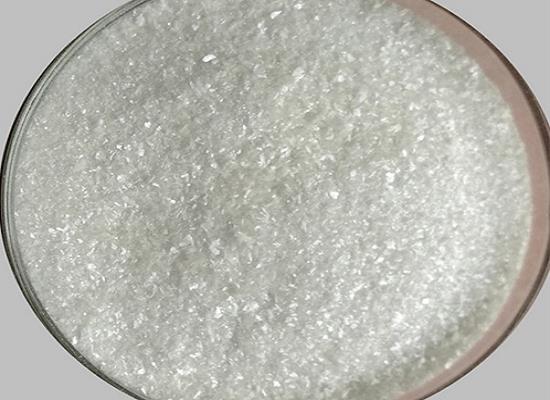Zirconium n-butoxide: versatile applications and safety
General Description
The versatile use of zirconium n-butoxide in nanoparticle synthesis, silica-zirconia composite sol preparation, and zirconium thio/oxothio cluster synthesis has been highlighted. zirconium n-butoxide, in combination with specific superacids, allows for the successful preparation of highly dispersible zirconium oxide nanoparticles and titanium oxide nanoparticles, showcasing potential applications in various solvents. Moreover, zirconium n-butoxide facilitates the creation of silica-zirconia composite sols with controlled particle sizes, enabling the customization and optimization of membrane properties for specific gas permeation applications. Furthermore, zirconium n-butoxide has been instrumental in producing novel zirconium thio and oxothio clusters with diverse and intriguing structural properties. However, it is crucial to note that zirconium n-butoxide poses significant safety risks, requiring stringent safety measures and protective equipment during handling.
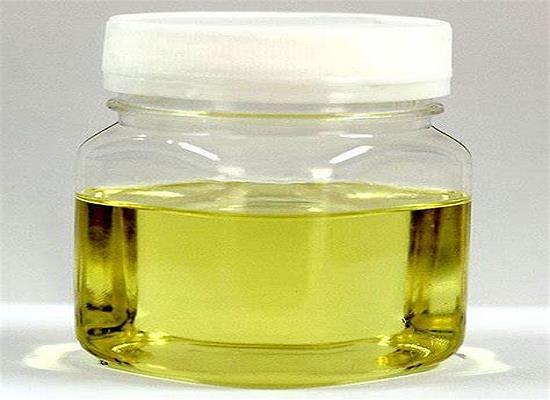
Figure 1. Zirconium n-butoxide
Applications
Preparation of zirconium oxide nanoparticles
Zirconium n-butoxide, when reacted with a water/methanol mixed solution of bis(trifluoromethanesulfonyl)imide superacid, can be used to successfully prepare highly dispersible and hydrocarbon-free zirconium oxide nanoparticles (ZrO₂-NTf₂-NP). These nanoparticles can be dispersed in various solvents such as acetone, ethanol, methanol, N,N-dimethylformamide (DMF), dimethyl sulfoxide (DMSO), and water. The average particle size of ZrO₂-NTf₂-NP was found to be 3.6±0.6 nm. Furthermore, the study also investigated the preparation of highly dispersible titanium oxide nanoparticles (TiO₂-NTf₂-NP) using titanium tetra-n-butoxide and the same superacid. TiO₂-NTf₂-NP could be dispersed in acetone, DMF, DMSO, and water. The average particle size of TiO₂-NTf₂-NP was determined to be 5.8±1.1 nm. The research suggests that highly dispersible zirconium oxide nanoparticles can also be prepared using other acid catalysts containing trifluoromethyl groups. However, the same approach did not yield dispersible titanium oxide nanoparticles using these acid catalysts. Overall, a study demonstrates the successful synthesis and dispersibility of ZrO₂-NTf₂-NP and TiO₂-NTf₂-NP, highlighting their potential applications in various solvents for different purposes. 1
Preparation of silica-zirconia composite sols
Zirconium n-butoxide (ZrTB) is used in the preparation of silica-zirconia composite sols through the sol-gel method. These sols are created by mixing tetraethylorthosilicate (TEOS), Zirconium n-butoxide, HCl, H2O, and EtOH at 70 degrees C for 24 hours. The molar ratios of the mixture components are adjusted to achieve desired properties. The mean particle size of the resulting silica-zirconia sol is controlled by the concentration of alkoxides and catalyst, as well as the water molar ratio in the starting solution. The particle size ranges from 20 to 350 nm, which is determined through analysis using dynamic light scattering (DLS) and field emission scanning electron microscopy (FE-SEM). To create SiO2-ZrO2 membranes, the sol solutions of different particle sizes are coated onto porous stainless steel supports using either the dipping-rolling-freezing-fast drying (DRFF) or soaking-rolling-freezing-fast drying (SRFF) method. These membranes are then evaluated for single gas permeation characteristics (He, H2, and N2) at room temperature. The results show a decrease in mean flow diameter and H2/N2 permselectivity in the range of 2.0-3.5. By controlling the particle size of the membranes, the pore size can be adjusted accordingly. This allows for customization and optimization of the membrane properties for specific applications. 2
Synthesis of zirconium thio and oxothio clusters
Zirconium n-butoxide has been used in the synthesis of three different zirconium thio and oxothio clusters, each characterized by distinct coordination modes of dithioacetate and/or monothioacetate ligands. The reaction of monothioacetic acid with zirconium n-butoxide under various experimental conditions yielded the polynuclear derivatives Zr3, Zr4, and Zr6. These derivatives exhibit unique features, with Zr6 displaying an unconventional star-shaped structure. In the case of Zr3, only sulfur-based ligands were observed, including chelating dithioacetate monoanions and an unusual ethane-1,1,1-trithiolate group μ3 coordinating the Zr ions. 1D and 2D NMR analyses confirmed the presence of differently coordinated ligands, while Raman spectroscopy was utilized for further characterization. Time-resolved extended X-ray absorption fine structure measurements revealed a rapid coordination of sulfur ligands and subsequent relatively quick rearrangement, providing insight into the cluster formation mechanisms. Overall, zirconium n-butoxide has been instrumental in producing these novel polynuclear complexes with diverse and intriguing structural properties. 3
Safety
Zirconium n-butoxide poses significant safety risks, as it is a flammable liquid and vapor that can cause allergic skin reactions, serious eye irritation, and skin, eye, and respiratory tract injuries. Inhalation may lead to chemical pneumonitis and CNS depression, while exposure to high vapor concentrations can result in neurotoxic effects and acute solvent syndrome. Additionally, it has the potential to cause skin burns, toxic pneumonitis from inhalation of metal fumes, and other associated occupational diseases. Therefore, stringent safety measures and protective equipment are essential when handling this compound to mitigate these health hazards. 4
Reference
1. Nakahara T, Kaneko Y. Superacid-Catalyzed Preparation of Highly Dispersible Zirconium Oxide and Titanium Oxide Nanoparticles Without Hydrocarbon Units. J Nanosci Nanotechnol. 2020 May 1;20(5):2755-2762.
2. Ryeon Lee H, Lee J, Seo B. Control of silica-zirconia nanoparticles for uniform porous SiO2-ZrO2 membranes. J Nanosci Nanotechnol. 2014 Nov;14(11):8626-8630.
3. Maratini F, Pandolfo L, Bendova M, Schubert U, Bauer M, Rocchia M, Venzo A, Tondello E, Gross S. From thioxo cluster to dithio cluster: exploring the chemistry of polynuclear zirconium complexes with S,O and S,S ligands. Inorg Chem. 2011 Jan 17;50(2):489-502.
4. Zirconium(IV) butoxide. Haz-Map, Information on Hazardous Chemicals and Occupational Diseases, CAS Number: 1071-76-7.
);You may like
Related articles And Qustion
Lastest Price from ZIRCONIUM N-BUTOXIDE manufacturers

US $10.00/KG2024-05-28
- CAS:
- 1071-76-7
- Min. Order:
- 1KG
- Purity:
- 99%
- Supply Ability:
- 10 mt
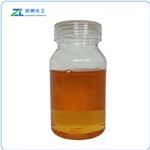
US $50.00/kg2024-05-20
- CAS:
- 1071-76-7
- Min. Order:
- 1kg
- Purity:
- 99%
- Supply Ability:
- 5000kg/week
